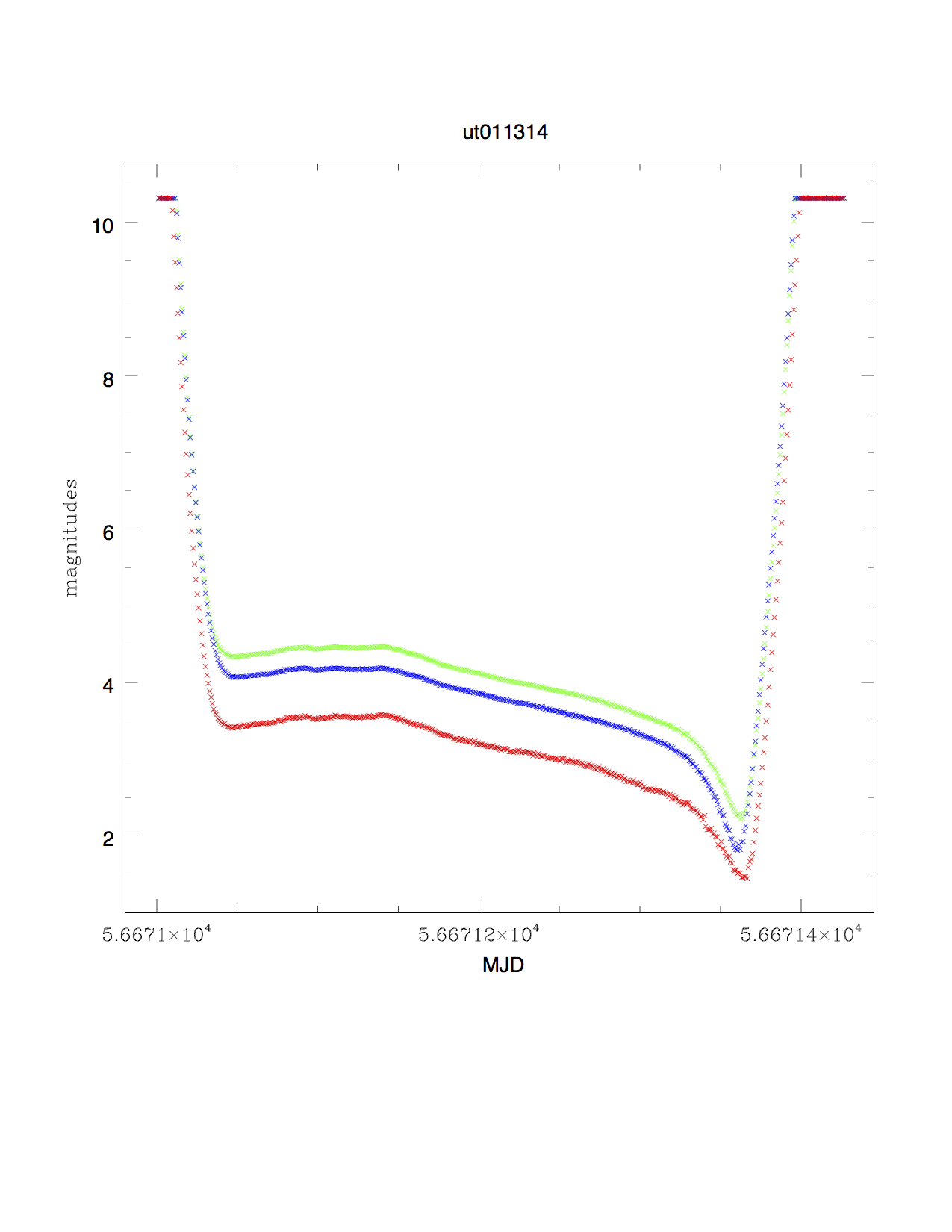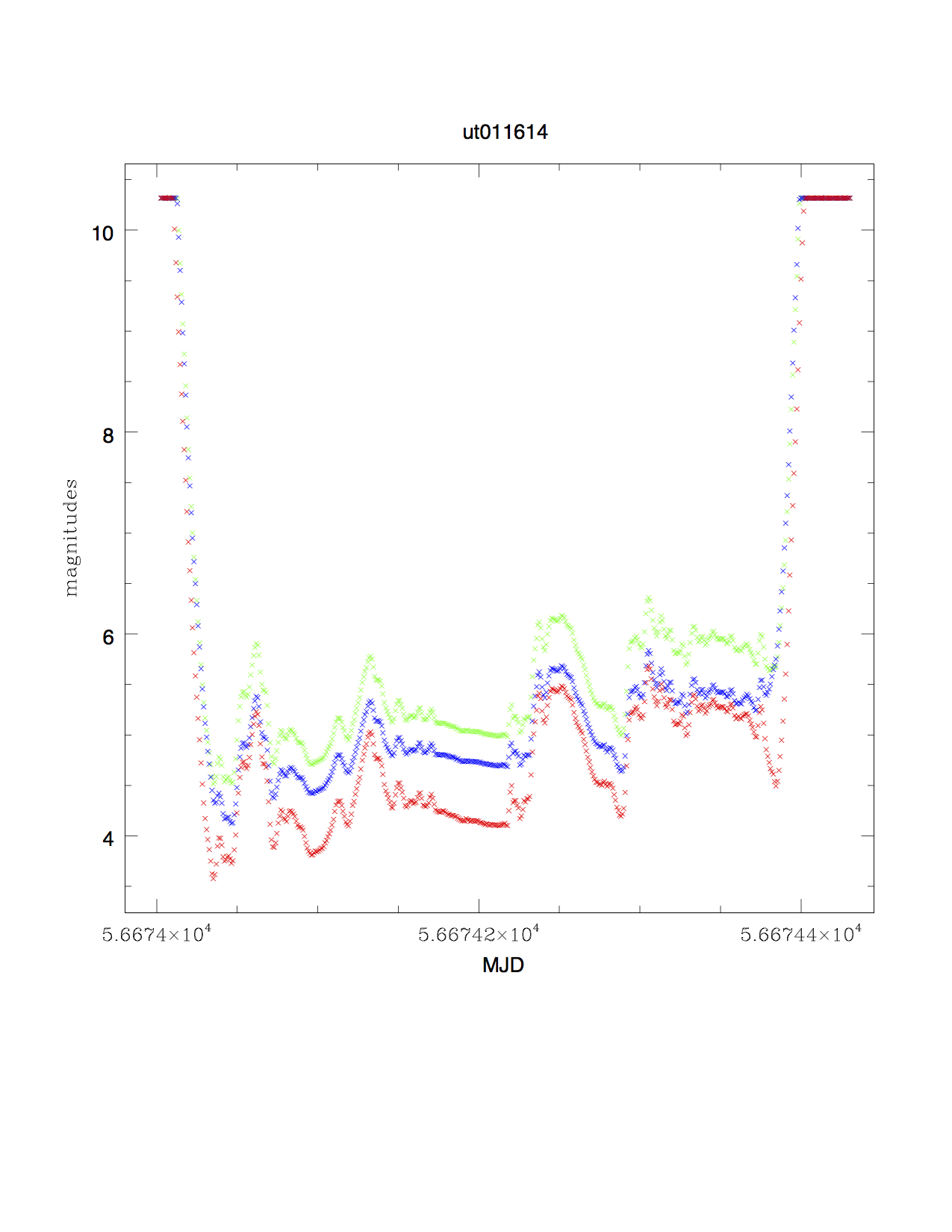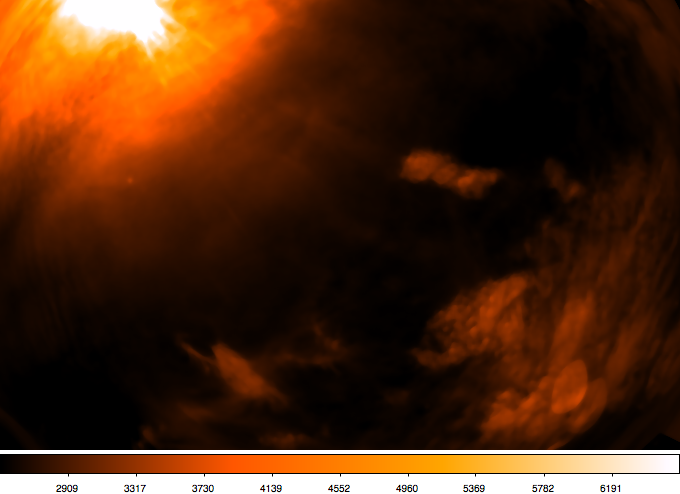...
A single 10sec exposure form the Cerro Pachon All-Sky Camera obtained on the first night of operation, January 13, 2014. The field of view spans 147.5 x 94.3 degrees and slightly more than 180 degrees in the corners where the local horizon is visible. The orange streak is the Sodium laser being used for Gemini South adaptive optics.
Introduction and Scope
The Large Synoptic Survey Telescope (LSST) is a wide-field 8m telescope that will survey the southern sky over a period of 10 years. Each LSST observation (a visit) has a duration of 34 seconds consisting of 2 back-to-back 15-second exposures re-pointing to the next sky position. The LSST will implement a "scheduler" that will optimize the observing cadence against science priorities and local observing conditions. To this end the LSST project has developed an operations simulator (OpSIm) that models the temporal sequencing of visits given parameters of science proposals, constraints of hardware performance and historically based observing conditions (seeing, sky brightness and weather).
...
We used a Canon 5D Mark III digital SLR camera with a (initially) 15mm focal length f/2.8 Sigma fisheye lens, (lens web site)pointed at the zenith. The camera is installed beneath a hemispherical plexiglass dome that is installed in the roof of the ALO building on the Cerro Pachon ridge.
...
These bands are fairly close to the astronomical standard BVR set of filters. Although one can obtain modified Canon cameras with the NIR-blocking filter removed, the unit we installed in Jan 2014 was an off-the-shelf version. This means the sky brightness in these bands will be dominated by scattered and reflected sunlight and unresolved sources, but we aren't sensitive to OH emission. More information on filters here : filter considerations
We have two measurement objectives:
...
getsky.sh: does simple statistics in a 400 x 400 pixel box in the center of the image, in each bandwipenight
testimage.sh: cleans out directory from a nighttakes a single 1/8000 sec f/22 image and calls it test.fits, reports statistics on the image as well.
makeskyplot.sh: makes .eps file using supermongo of sky brightness vs. MJD for a given night
...
Sky brightness in B,V,R vs. time, for night where moon set at the end of the night
surface plot of sky brightness across the image:
monochrome image of sky with moon and clouds, from image ut011414.0114, includes point sources
Image with sources suppressed with 20 x 20 pixel median filter, sky brightness map:
Color calibration using the sun
setup and configuration of Mac Mini
Atmospheric Transparency Statistics from 6 year ESSENCE survey, CTIO
Photo-diode Sky Brightness Measurements
internal temperature sensor options
sky brightness extraction from images
Camera Replacement - 11/17/2015






